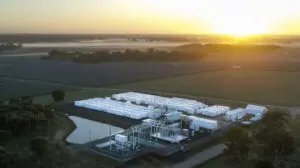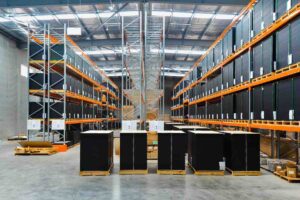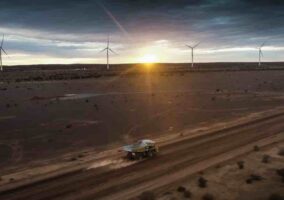The Australian Renewable Energy Agency has received a huge response to its offer of $100 million in grant funding for ‘advanced’ grid scale battery projects, which are considered essential for the transition towards a 100 per cent renewables grid.
A shortlist of 12 projects representing more than 3GW in capacity and 7GWh of storage has been finalised from more than 54 proposals.
ARENA says the response “far exceeded expectations,” and underscores the huge development pipeline of Australian big battery storage projects.
Funding will be provided for at least three projects and the shortlisted projects have been asked to submit full applications for their share of the funding offer, available for both new and existing projects retrofitted with an ‘advanced’ inverter.
The shortlisted projects amount to a combined $297 million of grant funding requests, with a total investment value of $3.7 billion.
The figures suggest ARENA funding could ultimately support the development of around 1,000MW of new battery storage capacity.
ARENA is offering maximum grant of $35 million to support the deployment of grid scale storage projects with ‘advanced’ inverters that enable the projects to offer grid forming and system support services.
“Advanced inverters that can help stabilise the grid are the missing piece of the puzzle that will support the transition to 100 per cent renewable energy penetration for short periods,” ARENA acting CEO Chris Faris said,
“We are really encouraged by the number and quality of applications to the round; it’s shaping up to be very competitive, The 12 shortlisted projects represented the strongest of an impressive field and we’re looking forward to seeing their full applications.”
Under the battery funding around, ARENA is offering grant funding to support the construction of new battery projects or the retrofit of existing batteries with a capacity of at least 70MW, which are to be equipped with ‘advanced’ inverters.
This will include grid forming capabilities and the ability to provide grid stability support as the market share of wind and solar projects continues to grow – allowing the batteries to effectively mimic the behaviour of synchronous generators like coal, gas and hydroelectric generators.
The grant guidelines published by ARENA say that funding may be provided to existing battery storage projects, to be used towards the retrofitting of a battery with a grid forming inverter, as well as the combination of a retrofit with an expansion of an existing battery project.
ARENA has previously provided grant funding to ElectraNet’s ESCRI battery storage project at Dalrymple, which was equipped with an inverter with grid-forming capability. That project ultimately repaid its $12 million grant back to ARENA after receiving substantial windfall earnings from its grid support services.
Other projects to include “advanced inverters” include the expanded Hornsdale Power Reserve – the Tesla big battery – and the Wallgrove battery in New South Wales, although the latter is yet to deliver the services to market.
The grant funding is necessary because these services are not yet rewarded by market signals.
The details of the dozen shortlisted projects have not yet been disclosed by ARENA, but the successful funding recipients are expected to be announced before the end of the year.
RenewEconomy first revealed the details of the battery funding round, which was officially launched last December and adopts the funding model previously used by the agency when providing funding support for early large-scale solar projects.
The 2022 Integrated System Plan, recently published by the Australian Energy Market Operator, highlights the need for a massive ramp up of Australia’s energy storage capacity as variable renewables meet more of Australia’s energy needs.
Under the ‘step change’ scenario – which has emerged as an effective ‘reference’ scenario due to the current pace of change – AEMO predicts renewables reaching a market share of 83 per cent by the 2030-31 financial year, and reaching 98 per cent by 2050.
To support this growth in variable renewables, the ISP suggests there will need to be a 30-fold increase in battery storage capacity – which currently sits at around 2GW – growing to 15GW by 2030 and 61GW by 2050.










